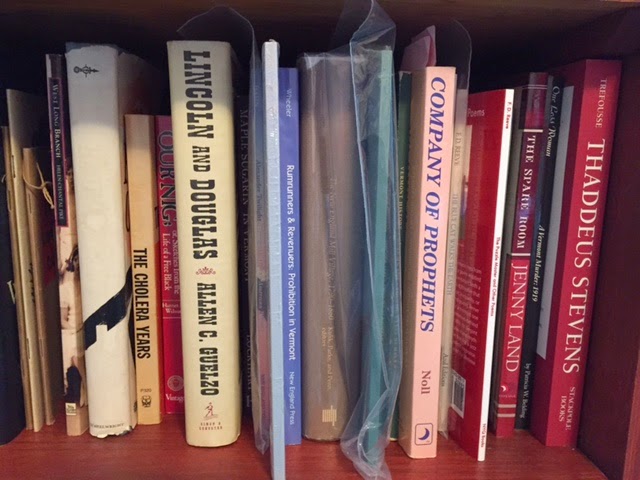Today I did some basic research into who painted such signs, and when, and how. I don't yet have the northern New England names of the (probably) men who did these, but I'm confident that I'll find them, eventually. And meanwhile, was excited today to learn a new term: wall dog. Apparently it wasn't entirely complimentary, but it fit the profession: painters who covered walls with signs, and "worked like a dog" for their wages, often in blistering hot summers. On the website PaintedAd.com are interviews with some wall dogs; here is a sample from site author Wm. Stage, who has a book on these (I'm ordering a copy!):
In 1983, I spoke with Art Hunn, then 82 and an administrator with the Painter’s District Council No. 2 here in St. Louis. His recollection of life as a signpainter stretched back seven decades to that day in 1916 when he signed on as an apprentice with the Thomas Cusask Co.
“Each spring as many as fifteen two-man crews would go out on the road three or four months at a time,” Art began. “We’d go into a town, and back then the Williams Company had lots of gas and oil signs leased, so we’d paint bulletins on filling station lots.” By 1924, Hunn and his partner were driving around Illinois, Missouri and Iowa in an “old broken-down Dodge,” punctuating scenic vistas with signs of the times—Bull Durham Tobacco, Pillsbury Flour, and Coca-Cola. Each crew, said Art, was expected to complete a sign a day.Last week I showed this photo of the Gold Medal Flour painted ad in Lyndonville.
And here's one for Coca Cola, from the White Market outer wall:
Of course, wall art advertising isn't limited to the "old days" -- here are two (or more) pieces from Angie's Alley.
More to learn, every day -- and all of it keeps me writing.













